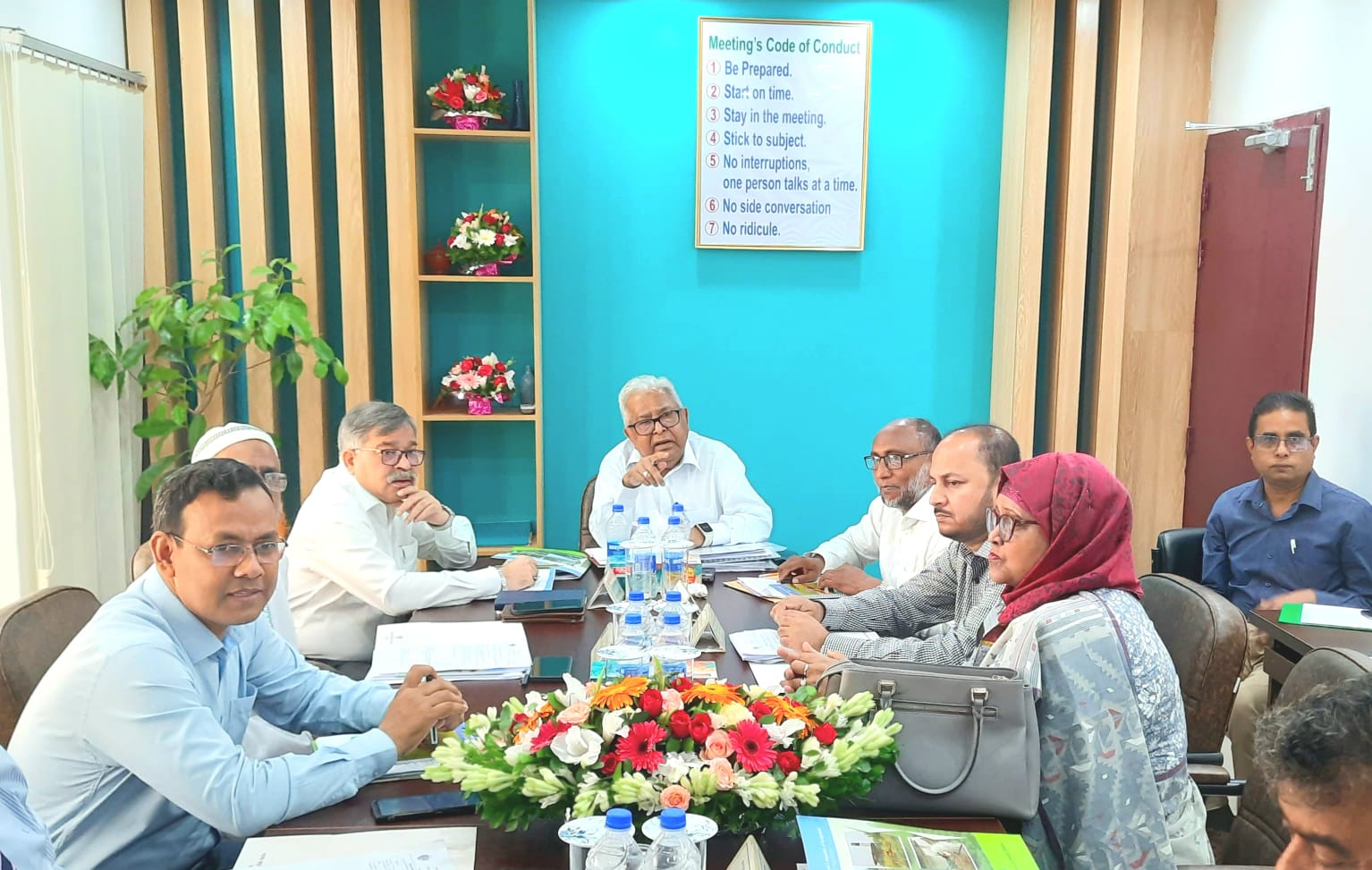News Flash
News Flash

RAJSHAHI, May 16, 2025 (BSS) - Speakers at a meeting unanimously viewed more efficiency in irrigation can be the crucial means of reducing the misuse of water alongside decreasing agriculture production cost.
The existing irrigation method causes misuse of water adding pressure on both ground and surface water posing a serious threat to ecology. In the water-stressed Barind area, the agriculture sector has been facing scarcity of irrigated water.
Agricultural experts and other stakeholders came up with the observations while addressing the 85th Board Meeting of the Barind Multipurpose Development Authority (BMDA) held at its headquarters in Rajshahi city on Thursday.
BMDA, the pioneering state-owned irrigation providing organisation in the northwest of Bangladesh, has brought 5.50 lakh hectares of croplands land under irrigation facilities through operating 15,820 deep tube wells (DTWs) and 966 low lift pumps.
With Dr Muhammad Asaduzzaman, Chairman of BMDA, in the chair, most of the board members consisting of administrative and police officials from different districts in Rajshahi and Rangpur divisions joined the meeting.
BMDA Executive Director Tariqul Islam, Joint Secretary from the Ministry of Water Resources Muhammad Habibur Rahman, Joint Secretary from the Ministry of Agriculture Khorshed Alam and BMDA Additional Chief Engineer Shamsul Huda were present on the occasion.
The meeting was described that additional 12.35 lakh tonnes of crops are being produced every year as a result of extending irrigation together with promoting need-based infrastructural developments in the region at present.
So far, 15,820 deep tube wells and 966 low lift pumps are being operated by both power supply and solar power bringing around 10.36 lakh hectares of land under controlled irrigation together with transforming those into three-cropping from double-cropping.
Instead of the previously earthen canals, 15,895-kilometer new concretised submersible canals were constructed side by side with expanding another 1,404-kilometer in commanding areas of each of the tube wells.
The development works saved 570 hectares of farming land coupled with resisting water from wastage. 12,031 hectares of land were freed from water-logging thereby 3.4 lakh tonnes of additional crops are being produced by bringing 89,000 hectares of land under irrigation every year.
The BMDA has re-excavated 2,527-kilometer derelict canals and 4,257 ponds creating scopes of producing around 2.15 lakh tonnes of additional crops annually through bringing 52,500 hectares of land under supplementary irrigation with surface water.
The region saw significant progress in the crop production sector following the expansion of irrigation facilities along with supplying water from the re-excavated canals and ponds.
Irrigation privileges were also arranged for around 20,700 hectares of land with surface water by installing 11 pontoons in rivers and 745 low-lift pumps in rivers and canals.
Around 20,000 households are getting safe drinking water from dug wells in some of the drought-prone high Barind tracts where the existing shallow and deep tube wells are yet to reach due to various reasons.
The villagers are not only using the water for drinking and other household purposes but also cultivating various less-irrigation-consuming cereal crops and vegetables after the best use of the surface water.
Around 950 hectares of land have been brought under vegetable farming through operating 640 dug-wells. More than 2,250 farmers were imparted training on how to operate the pumps side by side with using and promoting soft irrigation.
So far, 640 dug-wells with an equal number of solar power panels were installed bringing 33,750 people under safe drinking water supply coverage besides providing irrigation to 1,350 hectares of land in 197 villages.
The solar pumps are being used to fetch water from those dug wells. As a result, farmers' families are getting water through water distribution installations and 1.5-inch diameter pipelines easily for irrigation and household uses.
Apart from this, the solar panels are being used for lighting the pump house areas and as a funnel for harvesting rainwater which is also recharging subterranean water levels.